Text
vimeo
What’s worth seeing? What’s worth showing?
What does it mean to have a voice? In a culture where I don’t feel represented or feel misrepresented?
I spent the summer at ImpulsTanz festival where I was exposed to a wide array of post-modern and contemporary work in choreography. Interactions with artists who participated in DanceWEB scholarship program to talk about the work we’d seen and engaging with each other’s choreographic material helped me ruminate on value-building and taste-making as a choreographer. Generous offerings from Alban Ovenessian, Osamu Shikichi, Kim Ip, and Bettina Blanc-Penther helped me see what I wanted to see as a choreographer.
I’m finally in a place (both mentally and socially) where I feel psychological safety to speak, dance, and be, without worrying how I’d be seen, stand out, put myself in danger. Bettina shared with me Dancing around Race lecture slides from Camping, 2023 led by Gerald Cassel.
Being around artists, peers, and educators who are sensitive towards building equity-minded practices means a lot to me.
Questions I carry from the essay-this summer-into this semester
How can I choreograph with affect that comes from an intimate internal place–what you’d put in journal and would be embarrassed to reread?
How can I be a facilitator, not a censor-or to myself and to others? How can I be human in the process of inviting others into my interest/research?
How can I build a clear structure in space and communicate it so that my collaborators and I would have the freedom to delve deeply into what they want to bring to my work?
How can I utilize the underbelly of theatrical spaces?
Part II. Culture, Media and Politics
What’s cannot be seen? What has to be seen?
I chose the material that I want to be in dialogue with: an archival text from the 1970’s that I found on Korean Movie Data Base.
I am in the process of analyzing the parts of prolific writer-director Kim Ki-Young’s script that were censored by the government during Yushin Regime (1960s-70s). I still feel the heavy impact of this time of recalibration towards modernity in contemporary Korea. That is why I decided to unearth the script containing marks that
deletes
edits
inserts
The military junta heavily censored scenes written by Kim for depicting imagery associated with ideas that went against the regime. The images contain expressions of women and their empowerment (sexual, social, political) and premodern traditions associated with Buddhism, ritualistic elements, music and dance.
Looking at the script I am fascinated by images imagined by the artist vs. Censor-ers overlooking and policing, selecting — what can be shown, what was worthy of showing?
0 notes
Text
vimeo
Moving image & sound made with material from a contemporary dance/composition class "Mapping Movement" for artists in Seoul with little to no background in dance. For six weeks participants left marks on a piece of composition paper designed for Korean school children, who use grids to practice writing in Hangeul. Yun and Yooleh gathered and spliced grids from 40 different pieces of paper containing marks left by participants. Sound comes from a recording of accompaniment during the last class: luma (brightness) of each grid determines the place in the track that would be played.
0 notes
Text

instagram
1 note
·
View note
Text
instagram
instagram
0 notes
Text
instagram
0 notes
Text
instagram
0 notes
Text
instagram
0 notes
Text
instagram
0 notes
Text
instagram
0 notes
Text
instagram
0 notes
Text
instagram
0 notes
Text
instagram
0 notes
Text
5 Different Maps from
6/3/2023 Mapping Movement with S (producer), C (filmmaker), YN (musician), YK (graphic designer), Y (host)
Mapping Exercise (10 minutes)
1. Choose: Time, Space or Time, Sound
2. Level 1 is movement on the ground Level 2 in a sitting position Level 3 while standing. We practiced how to go from Level 1 to 2, 2 to 1, 2 to 3, 3 to 2, and from 1 to 3 and 3 to 1. Have this in mind when you're mapping movement.


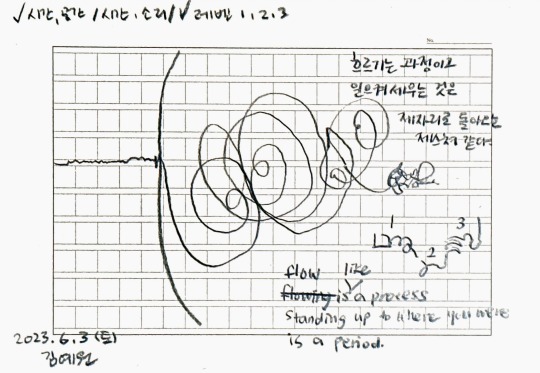


0 notes
Text
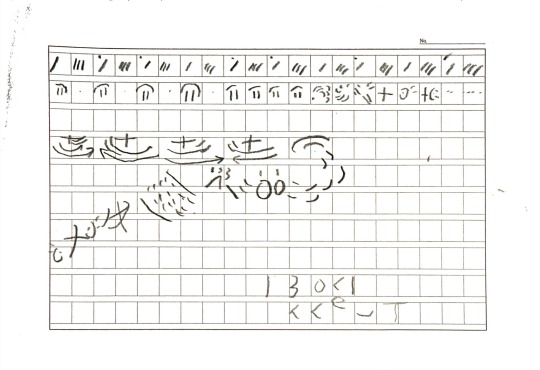


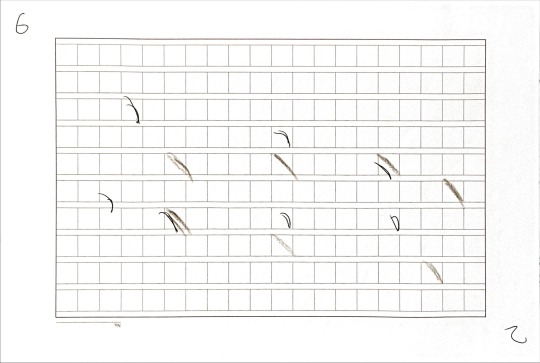
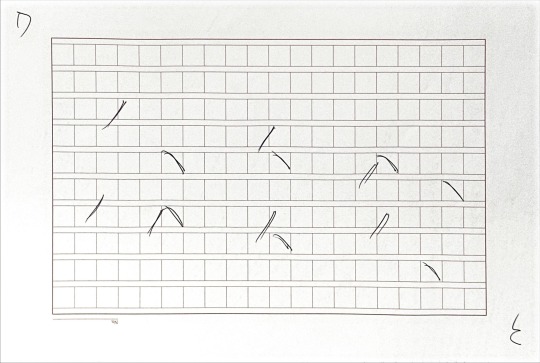

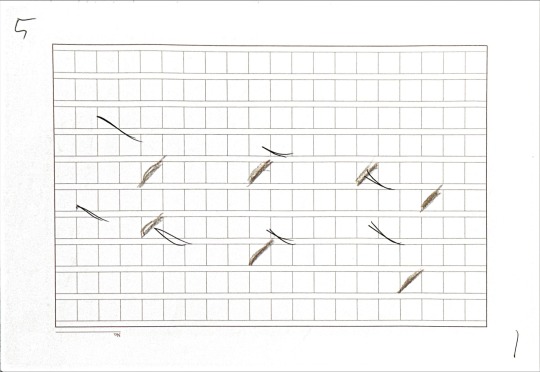



5/27/2023 Mapping Movement with S (dj/producer), C (filmmaker), M (activist), N (director), D (actor), Y (host)
S: “I saw the grids as blocks in digital interfaces I use to make music…the “mapping” starts from the second line.
D: “I recognize the notations on the second line as “(leg) swings” we performed (while dancing earlier).
S: “Yeah…and the these notations (underneath) indicate movement we did afterwards.”
Y: “…the arrows must be directions.”
S: “Yeah.”
C: “the black square in the middle is Y because I kept following her movement with my eyes. And then I started seeing S moving next to me, so this square here (in the bottom) is S. The ripples (circles) mark the boundaries of my movement in space. Today, I didn’t really move much, although Y gave directions to go to unfamiliar places in space. So I remain here (where circles are) mostly.“
M: “…and the page indicates the space in this dance studio?”
C: “Yes.”
M: “I like how Y works with these manuscript papers (in grids) so I wanted to participate. These yellows (triangles) are us in space. And then I used more paper to mark the movement we did, thinking the grids indicate the flowing of time. I was using too much paper so after marking in 4 pages I flipped the pages to make marks in 4 more pages.
N: “I am a senior in a college of Design and work with video mostly. But I don’t feel so comfortable using graphic language. So for the mapping/notating I chose to write down my thoughts on movement. I attend contemporary dance class regularly, but I never really sat down to jot down my thoughts on how I was moving until now."
D: “I started to see patterns on the floor and thought they were interesting. I drew the horizontal lines that were on the dance floor. When I was rolling, I found that if I follow this line with my limbs I could roll in a straight line. I made marks using a pencil and this tool (paper pencil) to make soft marks across the floor.”
Y: “I plotted dots in the center of the page thinking that it’s a central axis when we’re moving, or a spine. The lines I connected to the side are both symmetrical and asymmetrical like how we move or how we’re built, how our muscles are attached. I found it interesting that in contemporary dance we work with both symmetry and asymmetry…to know that I’m right handed and that I feel comfortable performing a certain movement pattern is helpful while trying to break from it.”
0 notes
Text



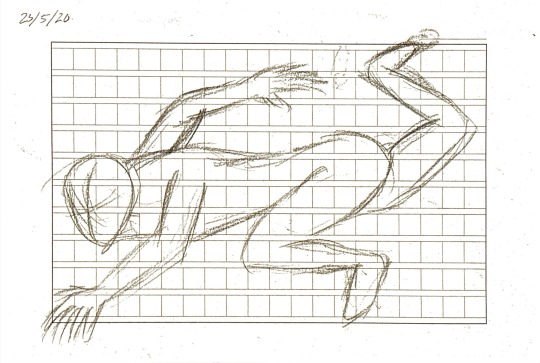
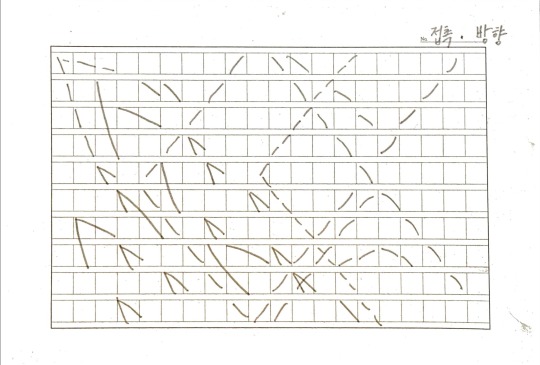
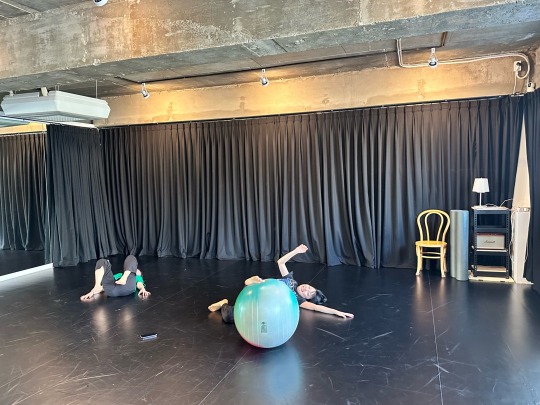

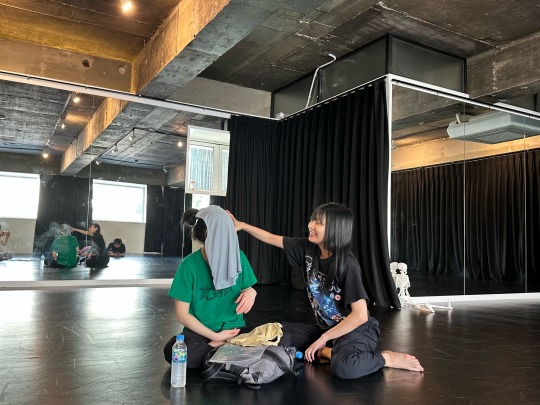

5/20/2023 Mapping Movement with Artists at Geometric Dance Studio: Beginning Floorwork joined by D (actor), J (composer), YJ (designer), K (trainer), Y (musician)
D felt sharp tip of her bone against the floor for the first time. It's been long since she felt the floor on her cheeks.
J was thrown into movement and imagined rolling forever in one line until fading out.
YJ remembered the sound "Woong Woong" and picked up some helpful keywords.
K experienced movement patterns new to him.
Y watched silently and assembled a skeleton called Frank.
1 note
·
View note
Text
instagram
Spectacle (2023)
Video-essay & text on view at Human Resource Market in Itaewon
0 notes